
By Dr.Timothy Sly Food-borne illness, Epidemiologist, Toronto.
Dr. Tim Sly holds qualifications in public health from the United Kingdom and Canada and worked in the public health field for 14 years before joining the teaching staff at Ryerson in 1982. He was the program’s director for more than nine years. In addition to his faculty appointment in this school, he also holds an Associate Faculty position with the School of Graduate Studies at Ryerson
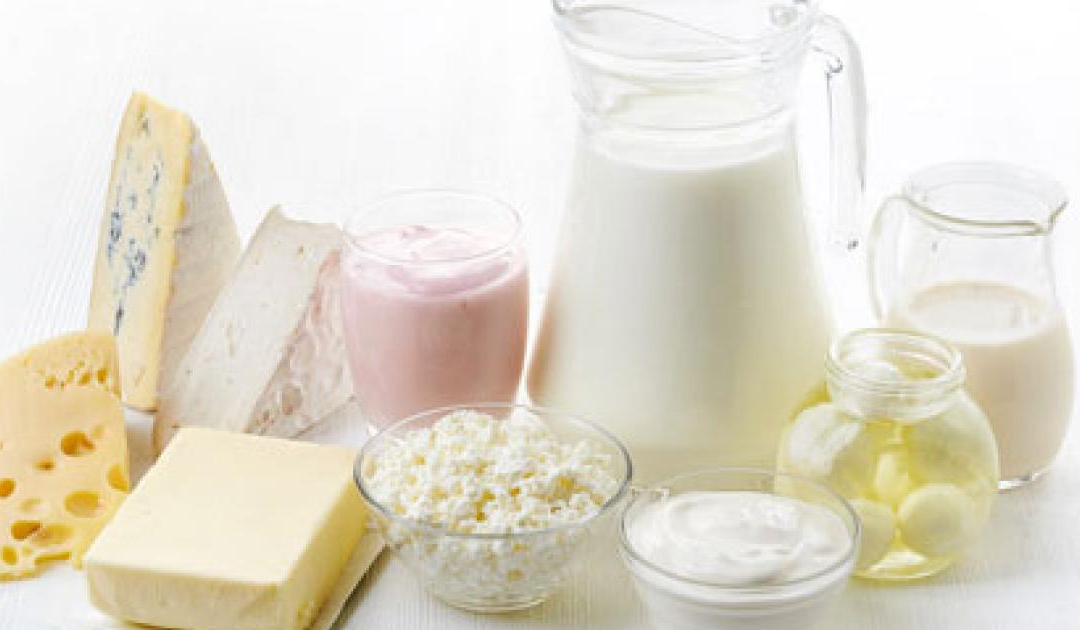
For years, it was my job to take raw milk samples for laboratory assay. I have also investigated sporadic cases and more important, outbreaks of milk-borne diseases in both the UK and Canada, and I have decades of data on milk-borne diseases.
This is what the evidence says:
- It is entirely possible to drink raw milk and through good luck without illness intervening – but the odds are against it. Virtually ALL milk-borne illnesses arise from raw milk (or pasteurized milk that was contaminated with raw milk). That means that ALL the risk from illness lies from RAW milk.

- There are about 30 different disease agents that are found in raw milk and not in pasteurized milk. These include Brucella, enteropathogenic E. coli, Staphylococi, Streptococci, Q fever, Listeria … the list continues. And tuberculosis is not out of the picture – see #7 below.
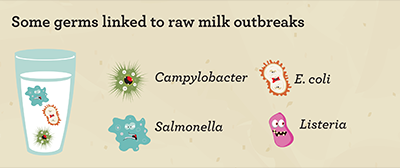
- Some of these are inside healthy cattle and goats but without any symptoms. Should these agents infect you, you will suffer the illness. An example is enterohemorrhagic E. coli. It’s a normal inhabitant of the bovine animal but can cause illness and even death in the human.
- Cleanliness of the animal and the barn is fine, but think about the normal excretion process…. the dropping solids and liquids fall and splash onto the ground inches away from the udder. The udder can be assumed contaminated at all times. A quick wipe does NOT sterilize the udder. The milk will contain pus cells, leukocytes, and bacteria. You are gambling that the bacterial contamination is less harmful rather than more harmful. (Dangerous gamble)

- “Enzymes” is the common misguided argument. It’s FALSE. Enzymes are species-specific. Any enzymes in bovine milk are intended for the bovine animal. Human enzymes function in the human.

- “Nutrition” is the other argument. The greatest loss is some of the vitamin C. But seriously, who depends on the tiny amount of vitamin C in milk as their main source of this nutrient?
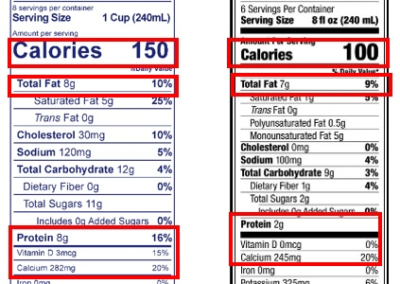
- Today’s generations have lost the memory of the dramatic drop of non-pulmonary tuberculosis to virtually zero when pasteurization became established. TB of the brain, eye, liver, skin, bladder, intestine, kidney, etc., were common in the first half of the 1900s, especially in children. Pasteurization stopped these diseases dead in their tracks. Now, know-it-all urban warriors, supported by the odd celebrity chef and movie starlet, are campaigning for the right to drink raw milk. Canadian provinces allow neither the sale of raw milk nor even giving it away to the public because the diseases in #2 will return. In fact, the milk-borne outbreaks in the last few years in those US state that permit raw milk sales have ALL been traced back to RAW milk. (As an aside, TB in dairy herds has NOT disappeared. Many dairy herds in N America have positive TB reactors. Ireland right now has a very worrying increase in TB+ animals in large dairy herds.)

- BUY YOUR RAW MILK & PASTEURIZE IT YOURSELF at HOME

The gullible still flock to the outlaw farmer who either sells raw milk through the internet falsely described as “not for human consumption” or by offering shares as part-owner of the “condominium cow” – in which city folk “purchase” a kilogram of the living cow and claim “ownership” of the animal, thus claiming legal consumption of its milk. If circumventing the law appeals to you, just DON’T involve your kids in the scheme (or buy your raw milk and pasteurize it yourself – you don’t need to boil it, just bring it to 145F (63C) for 30 minutes, or 161 F (72 C) for a few seconds).

MORE QUESTIONS ON MILK
Is ‘whole’ milk the same as ‘fresh’ milk?
They can be but the descriptions are for different things. “Fresh milk” means the milk has been recently taken from the cow or goat. “Whole milk” means that the milk fat remains unchanged (it has not been skimmed). In commercial milk, this means the milk fat has been standardized to around 3.5 percent (depending upon the breed and the animal, the milk fat can range from 3.4 to 5.6 percent). Consequently, you can find all four combinations:
What is ‘homogenized’ milk and why is it done?
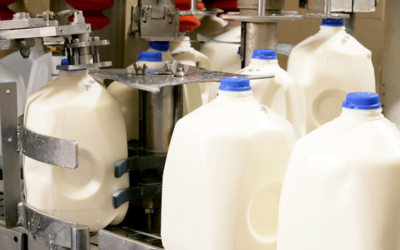
Milk is an “emulsion” of milk-fat in milk, and in a non-homogenized product, the milk will separate into two layers after a few hours, with the cream on top of the non-fat components. To keep everything blended together, the milk is forced under great pressure to break up the large fat globules into extremely small globules of fat. They are too small to separate and remain equally dispersed through the milk. [“homo” means “the same“, so “homogenized” means the fat has been distributed equally throughout the milk.

What is casein in milk and how much is present?

Cow’s milk contains about 3.22 percent total protein by weight. Approximately 82 percent of the protein is casein, and the remaining 18 percent is serum (whey) protein.

Casein is actually a group of proteins, each with a specific amino acid composition. Nutritionally, casein is considered the “perfect” protein, and all other animal and plant proteins are compared to it.
Can milk give you gas?
Yes. This is sometimes the result of a person who, as an adult, lacks the digestive enzyme that enables him/her to digest milk sugar (lactose). This enzyme is called lactase, and such a person is called “lactose-intolerant”. This is not an allergy, just a discomfort, with some bloating and gas. Children are universally able to digest milk, but as they grow into their teen years, adults who have family roots in Asia, Africa and S. America, as well as N. American first nations frequently experience this condition. Most adults of European origin, however, are able to drink milk without discomfort.

The remedy is to purchase specially-treated milk that has had the lactose removed.
What exactly is Carnation milk?

It is unsweetened, evaporated milk. Approximately half the water has been removed, but all other components have been retained. It is made from whole milk or from partly skimmed milk. It can be used straight from the can (as a substitute for coffee cream or adding to dessert) or can be diluted with an equal amount of water to produce approximately the original milk. It the dry undamaged can this milk can remain perfectly good to use for several years
Chemically, what is ‘spoiled milk’?
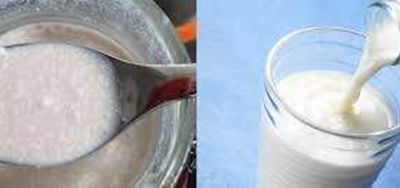
Milk directly from the cow/sheep/goat usually contains Lactobacillus bacteria and perhaps Streptococcus. In olden times, these bacteria produced acids, and the milk began to separate into (solid) curds and (watery) “whey”. This sour milk could be used in baking and cooking. This spontaneous ‘souring’ of milk was also originally the beginning of natural cheese-making.
Modern milk is pasteurized, so these simple bacteria are killed, and the milk has a much longer shelf life. But eventually, some of the other bacteria start to grow and will change the appearance, smell, and taste of the milk. It will become unpleasant and should not be used in cooking.
You can make your own “sour” milk in two ways:
(1) by adding a small amount of vinegar or lemon juice to the milk and mixing.
(2) by adding some plain yogurt to the milk, mixing well, and letting it sit overnight at a warm (37 C) temperature.

If ‘raw’ (unpasteurized) milk contains dangerous bacteria, why don’t baby cows become ill?
Sometimes they do! Here are some things to consider…
- Consider the bacteria Salmonella enterica (2,000 serotypes): many of these cause gastroenteritis in humans. But in animals, most of the Salmonella do not produce symptoms or cause a very low level of illness. For example, more than 50 percent of poultry have Salmonella in their intestines and remain well. On the other hand, Campylobacter bacteria can cause illness in animals and humans.

- Enterohemorrhagic strains of E. Coli (EHEC) are frequently present in the healthy bovine intestine. In the human, the same pathogen causes illness with serious complications in about 15% of victims.

- Brucella abortis certainly causes illness in cattle, including emaciation, fever, milk-loss, and spontaneous abortion. Brucellosis can be spread between animals and from animals to humans via unpasteurized milk.

- Bovine tuberculosis very definitely has not been eradicated, and is reported from time to time in dairy herds in N. America, Europe, and Ireland. It is passed between animals, and can be acquired by humans via unpasteurized milk.

So the true story is complicated. Sometimes animals are healthy but can carry human disease organisms. Sometimes both the animal AND the human can experience illness from the same organism.
I found small pieces of black material in a carton of fresh milk. What is it?

When the waxed carton is sealed, a machine holds the open ends together for less than a second using heat. If the filling line must stop for a few seconds. The most common reason for this is that the carton was held a little too long in the sealing stage (where high heat is applied to the waxed carton), probably due to the line being stopped momentarily. The extra heat causes some burning of the inner lining, which can fall into the milk.
It IS a quality-control problem and the processing dairy would appreciate being notified and receiving the defective unit.
How are 2% and skimmed milk manufactured?

Before whole milk is homogenized, it can be passed through the ‘cream-separator stage’. Separation of all or part of the milk fat is accomplished in a centrifuge. The milk is spun at high speed. The milk fat is lighter in weight and forms an inside layer which can be removed.
Here is a small centrifuge for separating milk.
The milk fat that is removed is made into different types of cream and butter.
Why doesn’t condensed milk come in single-serve containers like cream?
When I was in Europe, I saw sweetened condensed milk available in tubes, about the size of toothpaste tubes. The utility was wonderful; imagine how useful this was for camping, canoeing, and travelling generally. No refrigeration is needed, and instant milk and sugar mix for tea or coffee in your pocket! Here’s a similar product from Australia.

